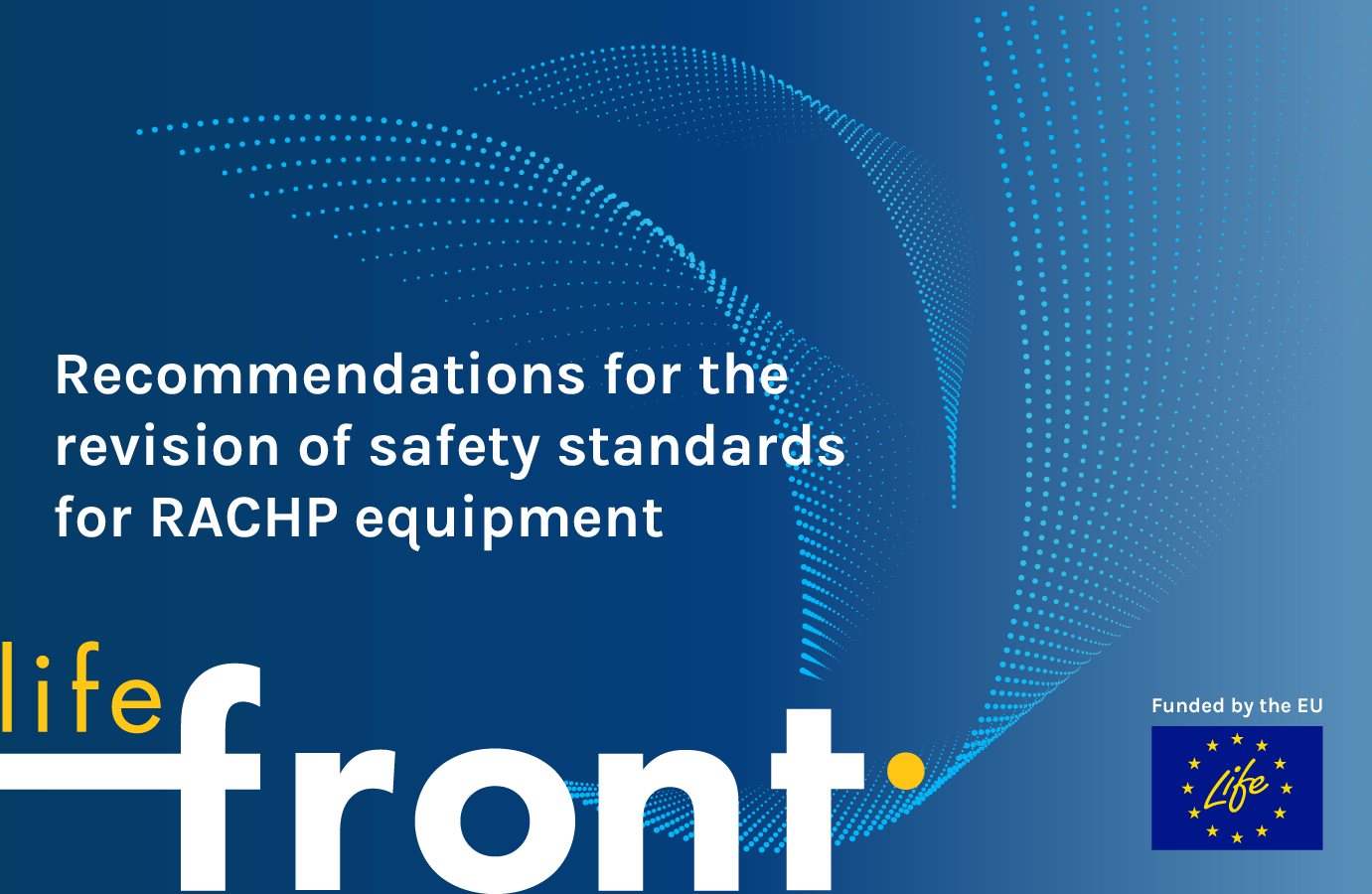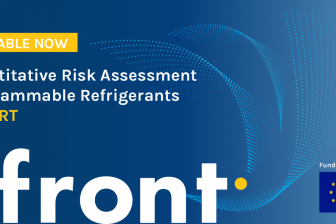A new approach to define safe charge limits for flammable refrigerants

A new approach to define safe charge limits for flammable refrigerants
The LIFE FRONT project has just released its latest report entitled “Recommendations for the revision of safety standards for RACHP equipment”.
LIFE FRONT is an EU-funded project that aims to remove barriers posed by standards for flammable refrigerants in refrigeration, air conditioning, and heat pump (RACHP) applications. With this new report, it provides project results from the laboratory testing as well as recommendations on measures to minimize concentrations of flammable refrigerants in the case of a leak; implementation of mitigation measures performance testing; and increasing charge size flammability risk focusing on smaller devices as described in the access categories ‘a’ and ‘b’ in the EN 378-1 (2016) Standard.
“By proposing these new approaches to determining charge limits, it is intended to prove that the safe application of higher charge limits is possible, and that future applications of safety standards will result in charge limits that enable a far greater and wider application of HC refrigerants without resulting in a significant risk increase for users,” explained Daniel Colbourne, Engineer at German Consulting Firm HEAT GmbH and Lead Technical Expert of the LIFE FRONT project. “This will, in turn, result in reduced greenhouse gas emissions from the sector, supporting countries meet their international GHG emissions reduction obligations.”
As the project strives to improve system design to address flammability risk and thereby encourage wider uptake of climate-friendly alternatives to fluorinated gases, this report provides a comprehensive base of information on how the RACHP sector would be better able to extend the use of flammable refrigerants safely, or with a minimum level of risk increase, and be better able to realize the benefits afforded by natural refrigerants. It discusses the charge size limitations and provides extensive analysis including focused testing on heat pumps ait-deutschland GmbH and NIBE AB. It also provides research related to RACHP equipment and more specifically to air conditioners and small refrigeration equipment, by compiling results and conclusions obtained in projects other than the LIFE FRONT project, as well as results from tests on refrigeration cabinets at AHT facilities (presented in a series of annexes to the report).
The analysis and testing presented in this report prove that the current application of safety standards limits on flammable refrigerants charges are too restrictive for the application of R290 in most RACHP applications. This report further proves that with judicious application of design principles to prevent certain forms of leakage or presence of ignition points, larger charge limits could be applied for a number of applications.
A range of possible approaches for extending or introducing new approaches for determining safe charge limits are proposed including the use of calculation methods, experimental methods, and risk assessment methods. This is coupled to an analysis on how to identify how far charge limits should extend to be useful, as well as being weighed against what the legislative requirements and constraints are.
The project establishes a procedure to support the design and implementation of experimental methods. The methods focus on specific applications where a product is placed in a test space and a refrigerant leak is simulated with subsequent measurement of concentrations around the product and test space’s floor are monitored for the duration of the release and for a period thereafter. Provided that the concentration does not exceed some fraction of the refrigerant Lower Flammability Limit (LFL), the test can be deemed to pass.
The report also proposes an improved approach for calculation methods based on the construction of the RACHP enclosure, from where the leaked refrigerant then can escape into the room. The method assumes a leak rate and enclosure characteristics (internal dimensions, height and position of openings, etc.) and that by the end of the release, floor refrigerant concentration does not exceed a predetermined minimum level of safety.
The report is available in the Downloads section.







